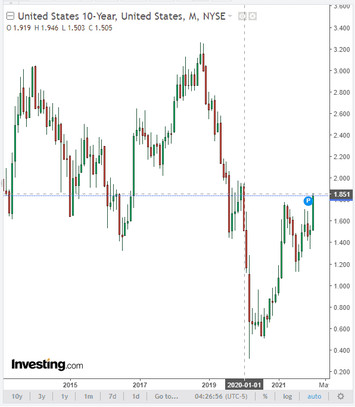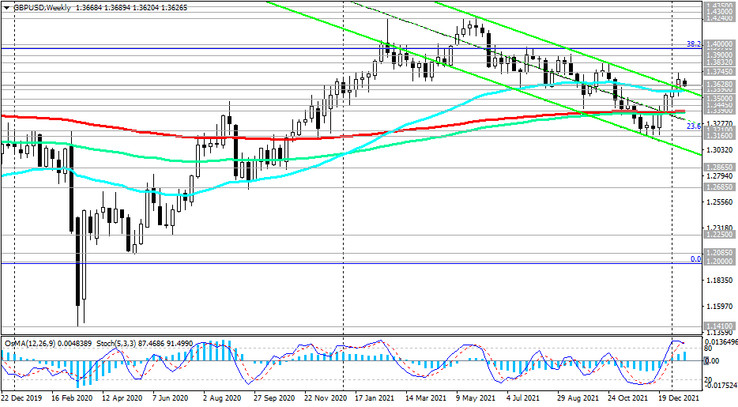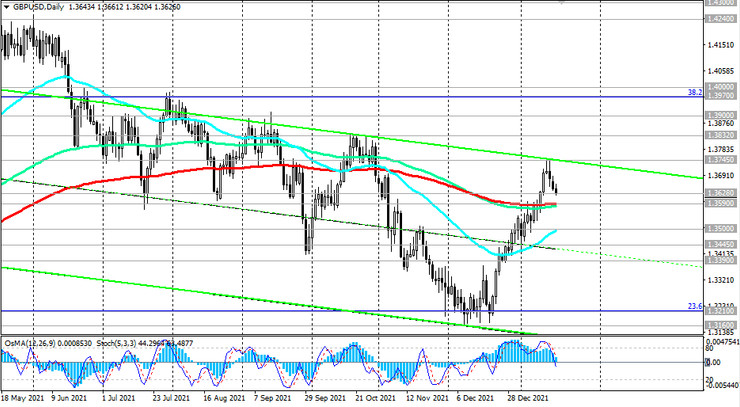As of this writing, DXY futures are traded near 95.33, 72 points above last week's low, while US 10-year bond yields jumped to a new 2-year high of 1.855% today from last week's low of 1.694%.

The dollar continues to recover the losses suffered last week, while the best resistance to it is now demonstrated by the British pound. GBP/USD, unlike other major dollar pairs, remains in the bull market zone, trading above the key long-term support levels 1.3390, 1.3590.


This morning came out very positive data from the British labor market. According to the National Bureau of Statistics (ONS), in the UK in December, the number of jobs grew by 184,000, and unemployment (between September and November 2021) was at 4.1% (against the forecast and the previous value of 4.2 %). The number of applications for unemployment benefits, while in December decreased by 43,300, and the average hourly earnings in September-November rose by 4.2% (in annual terms).
Thus, the spread of the omicron strain of coronavirus could not significantly weaken the country's labor market: the number of employed UK citizens has increased, and the unemployment rate continues to decline.
However, despite these positive macro statistics, the GBP/USD failed to develop an upward trend, retreating from the local high of 1.3745 reached last week.
Although it is still too early to talk about the victory over the coronavirus in the UK (the number of new infections continues to grow), market participants are counting on the fact that the Bank of England may raise interest rates again, as it did in the middle of last month, raising it by 0.15% to the current level of 0.25%, preempting faster domestic inflation.
The next meeting of the Bank of England, devoted to the issues of monetary policy, will be held on February 3rd. In this regard, market participants will carefully study the macro statistics coming from the UK, and it will appear tomorrow.
At 07:00 (GMT) consumer price indices will be published. The CPI index is a key indicator of inflation. Around its publication will be the main movement of the pound in the foreign exchange market, as well as the index of the London Stock Exchange FTSE100.
In the previous reporting month (in November), the growth in consumer inflation amounted to +5.1% (in annual terms). Forecast for December: +5.2% (in annual terms). The data suggests rising inflation, which is likely to increase pressure on the management of the Bank of England to tighten monetary policy, and this is a positive factor for the pound.
The CPI indicator below the forecast/previous value may provoke a weakening of the pound, since a decrease in inflation will force the Bank of England to take a wait-and-see position and adhere to a soft monetary policy course for the time being.





